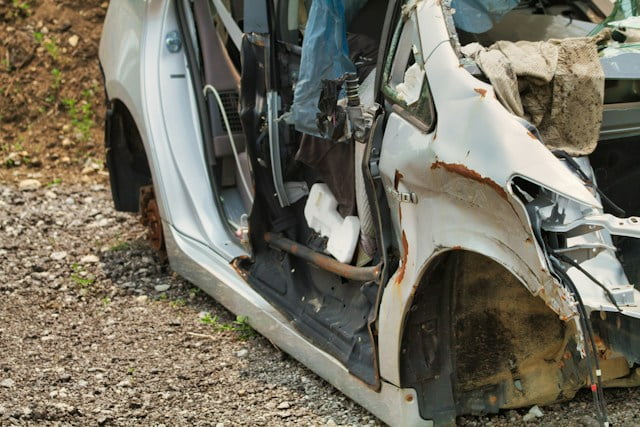Comprehensive (comp) and collision coverage are two types of auto insurance coverage that protect your vehicle in different situations. Here’s a brief explanation of each:

- Collision Coverage:
- Purpose: Collision coverage is designed to pay for damages to your vehicle that result from a collision with another vehicle or object, regardless of who is at fault.
- Examples: If you’re involved in an accident with another car, collide with a stationary object (like a tree or a pole), or roll over, collision coverage can help pay for repairing or replacing your vehicle.
Collision coverage is a type of auto insurance that helps pay for the cost of repairing or replacing your vehicle if it is damaged in a collision with another vehicle or object, regardless of who is at fault. This coverage is optional in many places, but it can be valuable for protecting your vehicle and minimizing out-of-pocket expenses in the event of an accident.
Key points about collision coverage include:
- Coverage Scope: Collision coverage specifically addresses damage to your vehicle resulting from collisions. It is not concerned with injuries to you or others, and it does not cover damage to other people’s property.
- Collision Scenarios: This coverage applies to a variety of collision scenarios, including accidents with other cars, collisions with stationary objects (such as trees or poles), or if your vehicle overturns.
- Deductibles: Like many types of insurance, collision coverage often comes with a deductible. This is the amount you are responsible for paying out of pocket before the insurance coverage kicks in. You can choose a deductible amount when you purchase the insurance policy.
- Claim Process: If you’re involved in a collision and want to make a claim, you typically need to contact your insurance company as soon as possible. They will guide you through the claims process, and you may need to provide details about the accident, get an estimate for the repair costs, and pay your deductible.
- Consideration for Older Vehicles: Collision coverage may be more cost-effective for newer or more valuable vehicles. For older vehicles with lower market values, the cost of the coverage, combined with the deductible, may outweigh the potential benefits.
Before deciding whether to include collision coverage in your auto insurance policy, it’s essential to consider factors such as the value of your vehicle, your budget, and how much risk you’re willing to assume in the event of an accident.
2. Comprehensive Coverage:
- Purpose: Comprehensive coverage, often referred to as “comp,” provides protection for damage to your vehicle that is not caused by a collision. It covers a wide range of non-collision events, often called “acts of God” or “acts of nature.”
- Examples: Comprehensive coverage can apply to damages caused by events such as theft, vandalism, natural disasters (like floods or earthquakes), fire, falling objects, and collisions with animals (like hitting a deer).
Comprehensive coverage, often referred to as “comp” or “other than collision” coverage, is a type of auto insurance that protects your vehicle’s damage that is not caused by a collision with another vehicle. This coverage is designed to cover a range of non-collision incidents, offering financial protection against various risks.
Key points about comprehensive coverage include:
- Coverage Scope: Comprehensive coverage applies to damages that result from events other than collisions. It covers a wide range of incidents often considered “acts of God” or “acts of nature.” This includes things like theft, vandalism, natural disasters, fire, falling objects, and collisions with animals.
- Non-Collision Events: Common scenarios where comprehensive coverage applies include damage caused by hailstorms, floods, earthquakes, fires, theft, and encounters with wildlife (such as hitting a deer).
- Deductibles: Like collision coverage, comprehensive coverage often comes with a deductible. You can choose the deductible amount when purchasing the policy. You will need to pay this deductible out of pocket before the insurance coverage kicks in to cover the remaining repair or replacement costs.
- No-Fault Coverage: Comprehensive coverage is generally considered “no-fault” coverage, meaning that it pays for damages regardless of who is at fault in the incident.
- Vehicle Value Considerations: Comprehensive coverage is often recommended for newer or more valuable vehicles, as the cost of repairing or replacing a damaged vehicle can be significant. For older vehicles with lower market values, the cost of comprehensive coverage may be weighed against the potential benefits.
- Claims Process: If your vehicle sustains damage covered by comprehensive insurance, you typically need to contact your insurance company promptly. They will guide you through the claims process, which may involve providing details about the incident, obtaining repair estimates, and paying your deductible.
Adding comprehensive coverage to your auto insurance policy can provide you with a more extensive range of protection beyond just collisions, helping you address a variety of potential risks and ensuring your vehicle is covered in a broader range of scenarios.
In summary, while collision coverage primarily deals with damage resulting from collisions with other vehicles or objects, comprehensive coverage extends protection to a broader range of non-collision incidents. Many car owners choose to have both comprehensive and collision coverage to ensure their vehicles are protected from various risks. Remember that both coverages often come with deductibles, which are the amounts you need to pay out of pocket before your insurance kicks in.




